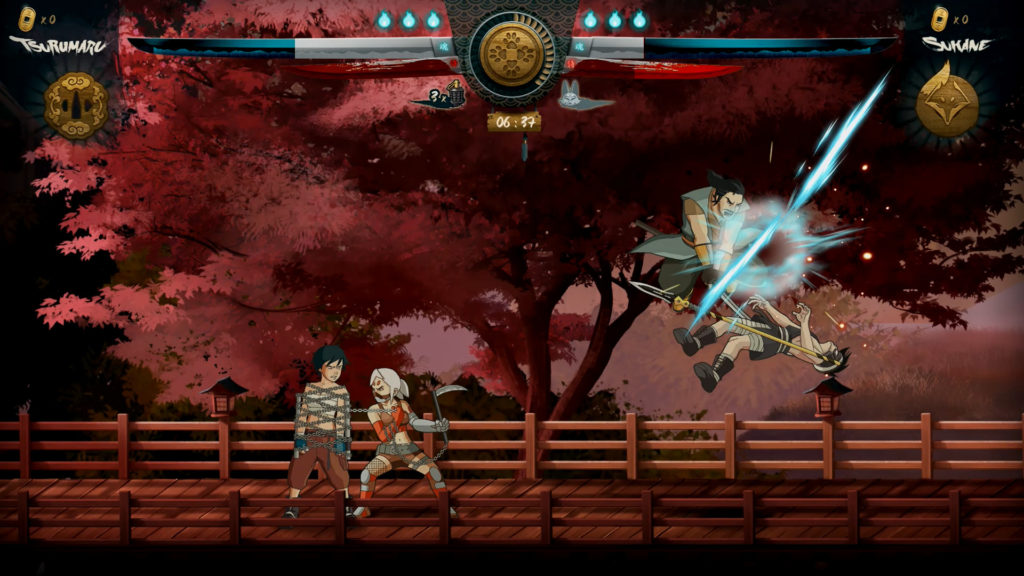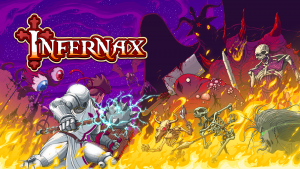
Samurai Riot, developed by Wako Games, is a 2D co-op combat game that takes cues from older beat-em-up titles like Streets of Rage. There are a number of features that make this game a very good entry into the genre, and further unique aspects that really push it to the next level, above carbon copies of its peers.
The initial set-up phase of the game allows the player to choose between Sukane, a female Samurai whose mysterious origins have made her a privileged member of her clan, and Tsurumaru, who slayed a notable samurai at the tender age of 16 and has since become the Art of War Adviser to the Great Master of his clan. Following character selection, players are able to select their chosen school, of which four are available at the beginning of the game, and a further twelve can be unlocked via currency which is earned in-game. These schools offer stat alterations and bonuses tied to their names (for example the School of the Frog unlocks a double jump), which does add a nice extra dynamic to the tactics of gameplay.
One of the first things you will notice upon booting up Samurai Riot, and your first level, is the absolutely killer soundtrack. A modern spin on traditional Japanese music, it fits the games style brilliantly and it’s not out of the realms of possibility that you would want to listen to it in its own right, something which I rarely think about game music, as good as a lot of it is. Further to this, the art style works really well with what the developer is trying to achieve. It’s comparable to comic book art, particularly in the introductory cut-scenes, and the animations during the combat are furthered by this cartoon-like concept.

Where this title stands out amongst its competitors is the number of ways you can influence the outcome of the story. The biggest choice you have to make, arguably, is at the end of the very first level and locks off a whole avenue of options later on in the game, depending on which option you went for. This led to me running through the entire game twice, picking the alternate option the second time around. Both story arcs were extremely well written and without them, this game may well have fallen somewhat by the wayside. Somewhat reminiscent of the old “make your own adventure” books this is absolutely the standout feature of the game, eschewing the illusion of choice adopted by many larger developers.
Levels tend to consist of an easier introductory start with a few lower-level enemies, before the numbers and quality of the foes increases as you progress further. The end of each mission culminates in a boss fight that does go up in difficulty at a sensible rate (at least on the normal difficulty I was initially playing on) and, as a formula, it works fairly well. The game does have areas to improve upon, particularly with the single-player combat. There are two basic types of attack, using the katana and kicks, which can be augmented with strikes from the air, and there are also grenades which can be thrown to assist with crowd control. It can get repetitive fairly quickly and the game would really benefit from further combinations and combat animations for the lone player to bring it into line with the co-op mode and increase the replayability of the game.
Overall, however, Samurai Riot really is a great game to take a look at if you are in to this style of game but bored of lazily developed clones. The story is extremely immersive and the combat is fun, if a little dull in parts. The boss fights add a nice extra dynamic and the soundtrack will make you want to keep playing if just to listen to it. At the price of $14.99/£10.99 you really can’t go wrong with this one, just don’t blame me if you get chopped to bits.
Samurai Riot is available now for PC via the Steam digital distribution platform.







